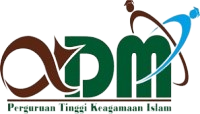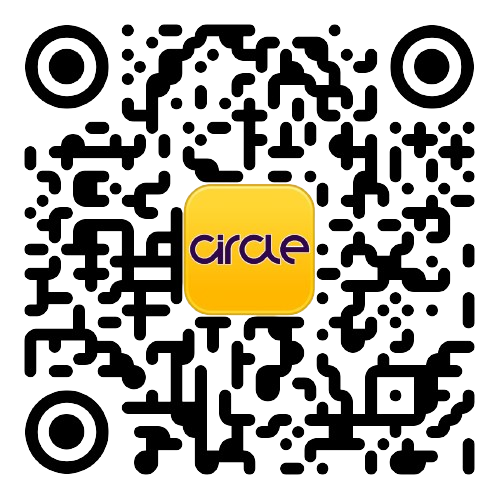Author Guidelines
AUTHOR GUIDELINES
Before you consider submitting your manuscripts to Circle: Jurnal Pendidikan Matematika, please familiarize yourself with the Author Guidelines.
- General Information for Submission
- Manuscript submitted to Circle: Jurnal Pendidikan Matematika should be research-based papers that have not been published or are under consideration elsewhere.
- Prior to submission, register and login as an author to the open journal system (OJS).
- The manuscript must be submitted through the system of the journal. Manuscript submissions through email will not be considered.
- The manuscript should contain between 3,000 to 5,000 words with one-half space, excluding abstract, references, and appendices.
- The manuscript is in Indonesian with Ms. Word doc., Docx., or RTF. formats, one-half space, 11 font size, Book Antiqua font, A4 paper with normal margins.
- The manuscript will be reviewed by subject reviewers, while the editors reserve the right to edit the manuscript for format consistency without altering the substance.
- The manuscript is prepared using the Article Template.
- The citations and references should follow the style of the American Psychological Association (APA) 7th Edition and use reference management software such as Mendeley, Zotero, etc.
- Article Structure
- The manuscript consists of 6 important parts, namely: 1. Title, abstract, and keywords; 2. Introduction; 3. Method; 4. Results and Discussion; 5. Closing, conclusions, suggestions; 6. Bibliography
- The title should be no more than 15 words, in sentence case, an initial capital letter for any proper nouns, left, bold, Book Antiqua, and 14 font size. The title should indicate the novelty of the research. It should be concise and informative.
- The full name of the author(s) must be written without academic title(s) in 11-pt Book Antiqua bold. The affiliation, including department and university, should be written below the name in 11-pt Book Antiqua
- The corresponding author must provide his/her email address.
- The abstract is filled with research objectives, research methods, results, and conclusions. The length of an abstract is no more than 250 words for each Indonesian and English. The abstract is written in a 10pt Book Antiqua font single space.
- The keywords should represent the content and highlight your article. There must be 3-5 keywords (phrases). Each phrase in the keywords should be arranged alphabetically.
- The introduction should consist of the background of the study, research contexts, literature review, and research objectives. The section should explicitly state the research gap and show the novelty of the research. The introduction should be presented in the form of paragraphs, not pointers/sub-headings, with a proportion 25% of the whole article length.
- The method consists of a description concerning the research design, research setting and participants or data sources, data collection, and data analysis with a proportion of 10% of the total article length. The method section is presented in subheadings.
- The result and discussion section consists of a description of the results of the data analysis to answer the research question(s) and their meanings seen from current theories and references of the area addressed. The proportion of this section is 60% of the total article length. This section should be explained in several subheadings.
- The closing section consists of the conclusions and suggestions of the main findings. It should declare concisely the most important propositions of the paper as well as the author's views of the practical implications of the result. You can also suggest future research and point out those that are underway. The proportion of this section is 5% of the total article length
- Quotation, citations, tables, figures, and references must comply with the APA citation style. Every source cited in the body of the article should appear in the reference, and all sources appearing in the reference should be cited in the body of the article.
- The sources cited should at least 80% come from those published in the last 5 years. The sources cited are primary sources in the form of reputable journal articles (strongly recommended), books, and research reports, including theses and dissertations. The minimum requirement is 15-35 references and 40-80% taken from reputable national and international journals.
- Citation is done using a bracket (last name and year of publication). When the sources are cited verbatim/direct quotation, the page number is included (p. 56 or pp. 56-57).
- In-text Citations
Single Author
Tujuan pembelajaran menggunakan modul adalah untuk siswa … (Prastowo, 2011).
“I would not only focus on mathematics but on science …” (Raussen and Skau 2010, p. 403)
Hoffert (2009) menganggap matematika sebagai bahasa universal, namun sejumlah siswa ….
2 Authors
Building critical awareness ... (Fang & Widodo, 2019).
"critical awareness and criticality in challenging the monolingual policy ..." (Fang & Widodo, 2019, p. 101).
Fang and Widodo (2019) declare that building critical awareness ....
3 to 20 Authors
Foreign language learners ... (Humphries et al., 2015).
"Supportive classroom culture in foreign language learning ..." (Humphries et al., 2015, p. 172).
Humphries et al. (2015) reported that foreign language learners ....









